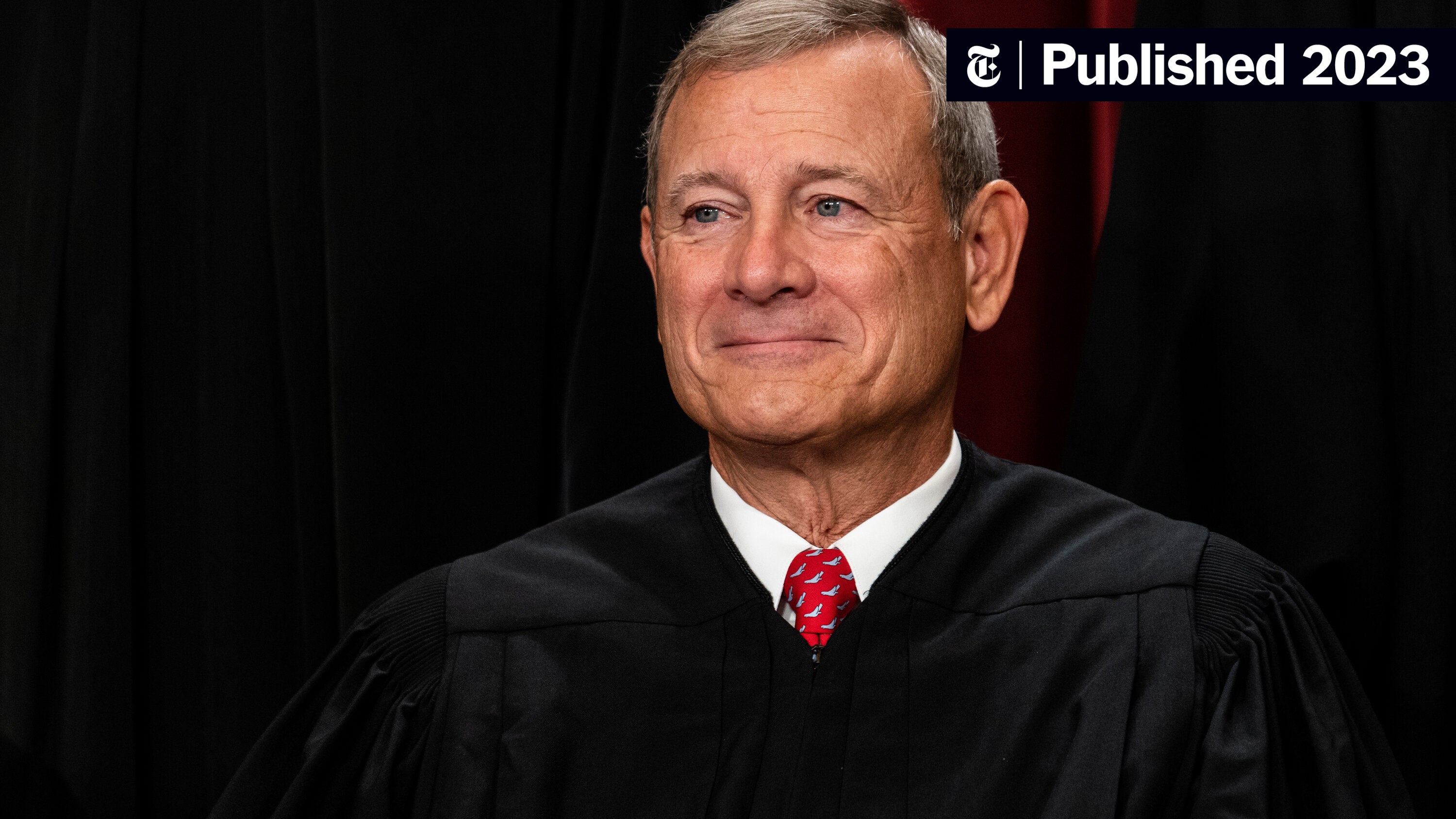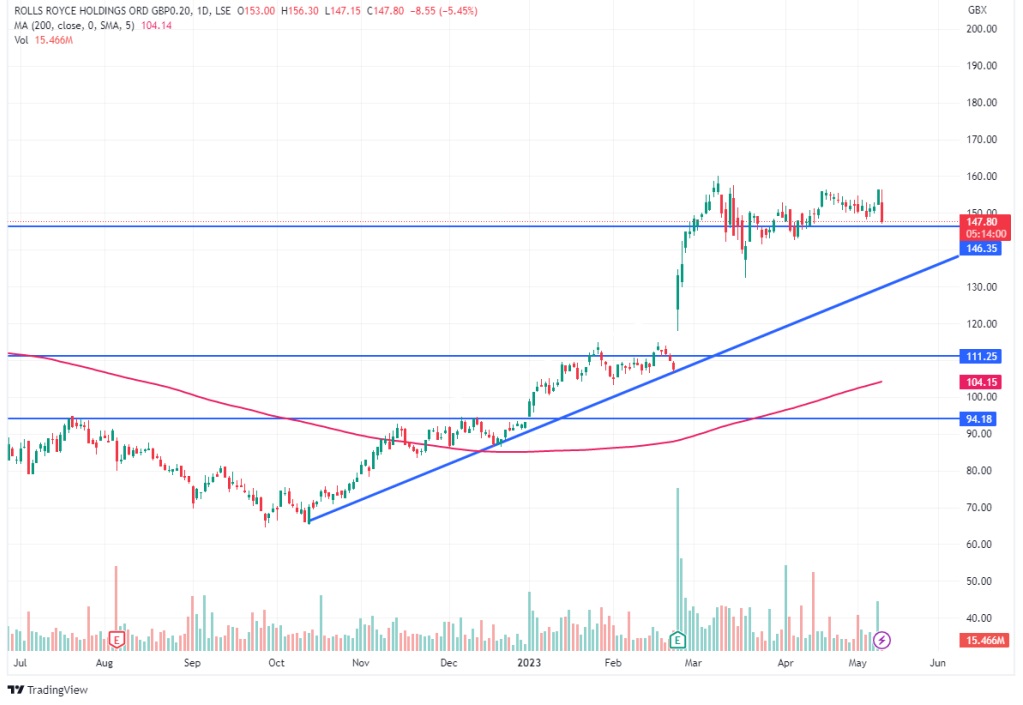Will Chief Justice Roberts Continue To Weaken The Church-State Divide? Analyzing Recent Rulings

Table of Contents
The Carson v. Makin Decision and its Implications for School Choice
The 2022 Supreme Court case, Carson v. Makin, significantly impacted the landscape of church-state separation by addressing the use of public funds for religious schools. This Maine case challenged a state program that provided tuition assistance for students attending private schools but explicitly excluded schools that provided religious instruction.
- Summary of the majority opinion and its rationale: The majority opinion, authored by Chief Justice Roberts, held that Maine's exclusion of religious schools from its tuition assistance program violated the Free Exercise Clause of the First Amendment. The Court argued that excluding schools based on their religious character constituted impermissible discrimination.
- Dissenting opinions and their key arguments: Dissenting justices argued that the ruling undermined the Establishment Clause, which prohibits government endorsement of religion. They contended that providing public funds to religious schools could lead to government entanglement with religion, contradicting the principle of church-state separation.
- Impact on state-level funding for religious education: The Carson v. Makin decision has emboldened challenges to similar state programs nationwide that restrict public funding for religious schools. Many states are now reevaluating their policies on religious school funding.
- Potential expansion of religious school choice programs nationwide: The ruling is likely to fuel the expansion of school choice programs that include religious schools, potentially altering the landscape of public education. This raises concerns about the potential for increased religious influence in public education and the blurring of lines between church and state.
- Long-term effects on the principle of neutrality in public education funding: The long-term effect of Carson v. Makin on the principle of neutrality in public education funding remains to be seen. Critics worry that this decision sets a precedent for eroding the wall of separation between church and state in public education.
The Role of Chief Justice Roberts in Shaping Church-State Jurisprudence
Chief Justice John Roberts's role in shaping contemporary church-state separation jurisprudence is undeniable. His voting record in these cases reveals a nuanced approach, often seeking a balance between religious freedom and the avoidance of government entanglement with religion.
- Analysis of his approach to interpreting the Establishment Clause and Free Exercise Clause of the First Amendment: Roberts's interpretations often emphasize the Free Exercise Clause, protecting religious practices from government interference. However, his approach to the Establishment Clause is more cautious, aiming to avoid excessive government entanglement with religion.
- Comparison with previous Chief Justices' stances on the issue: Compared to some of his predecessors, Roberts’ approach appears to be more accommodating to religious claims, leading to concerns about the weakening of the traditional understanding of church-state separation.
- Examples of cases where his vote was pivotal in shaping the outcome: Carson v. Makin is a prime example. His vote in the majority solidified the ruling and its significant implications. Other cases, even with dissenting opinions, highlight a pattern of Roberts’ influence in shaping outcomes favorable to religious institutions.
- His judicial philosophy and its influence on church-state jurisprudence: Roberts's judicial philosophy, often described as pragmatism or textualism, appears to inform his decisions in church-state separation cases. This approach, focusing on the specific text of the Constitution, can lead to varied interpretations depending on the context.
Challenges to the Traditional Understanding of the “Wall of Separation”
The metaphor of the "wall of separation" between church and state, often attributed to Thomas Jefferson, has been subject to evolving interpretations. Recent Supreme Court decisions have challenged the traditional understanding of this concept.
- Historical context of the metaphor and its intended meaning: The historical context suggests a desire to prevent government interference with religion and vice versa, safeguarding religious freedom while maintaining governmental neutrality.
- How recent Supreme Court decisions have challenged or modified this understanding: Cases like Carson v. Makin suggest a weakening of the strict interpretation of the “wall,” leading to debates about its continued relevance in modern society. The Court appears to be favoring a more flexible interpretation, potentially allowing for greater interaction between church and state.
- Arguments for and against a stricter interpretation of the separation of church and state: Advocates for a stricter interpretation emphasize the importance of government neutrality to protect religious minorities and prevent the establishment of a state religion. Conversely, those who advocate for a looser interpretation highlight the importance of religious freedom and the potential benefits of cooperation between religious organizations and the government.
- The role of public opinion in shaping legal interpretations: Public opinion on church-state separation significantly influences the political and legal landscape, impacting the interpretation of constitutional principles and affecting judicial decisions.
Potential Future Litigation and its Impact
Future legal challenges related to church-state separation are inevitable. Several areas of potential conflict remain.
- Areas of potential conflict (e.g., religious displays on public property, mandatory prayer in schools): These issues will likely continue to generate litigation and judicial review, further shaping the understanding of the church-state separation doctrine.
- Predictions for future Supreme Court rulings based on current trends: Based on current trends, the Court may continue to favor interpretations that prioritize religious freedom, potentially leading to further challenges to traditional understandings of the separation of church and state.
- The potential impact on religious organizations and government entities: These rulings will have profound implications for both religious organizations and government entities, influencing funding, regulations, and the overall relationship between the two.
Conclusion
The Supreme Court's recent decisions, particularly those influenced by Chief Justice Roberts, signal a potential shift in the interpretation of church-state separation. The Carson v. Makin case exemplifies this trend, raising significant questions about the future of public funding for religious institutions and the overall balance between religious freedom and government neutrality. Understanding these evolving legal interpretations is crucial for navigating the complex relationship between church and state in the years to come. To stay informed about future developments in this critical area of law, continue to follow the ongoing debate surrounding church-state separation and its implications for American society.

Featured Posts
-
 Zhizn Za Shirmoy Realnost Raboty Eskortnits V Moskve
May 02, 2025
Zhizn Za Shirmoy Realnost Raboty Eskortnits V Moskve
May 02, 2025 -
 Is 5 Realistic Xrp Price Prediction And Market Analysis
May 02, 2025
Is 5 Realistic Xrp Price Prediction And Market Analysis
May 02, 2025 -
 Christina Aguilera New Photoshoot Sparks Debate Over Excessive Photo Editing
May 02, 2025
Christina Aguilera New Photoshoot Sparks Debate Over Excessive Photo Editing
May 02, 2025 -
 Rolls Royce Addresses Tariff Impacts Reaffirms 2025 Financial Outlook
May 02, 2025
Rolls Royce Addresses Tariff Impacts Reaffirms 2025 Financial Outlook
May 02, 2025 -
 Fortnites Item Shop Update Faces Backlash From Players
May 02, 2025
Fortnites Item Shop Update Faces Backlash From Players
May 02, 2025
Latest Posts
-
 The Truth About Daisy May Coopers Weight Loss And Lip Fillers
May 02, 2025
The Truth About Daisy May Coopers Weight Loss And Lip Fillers
May 02, 2025 -
 Selena Gomezs 80s Inspired High Waisted Suit A Modern Take On Classic Style
May 02, 2025
Selena Gomezs 80s Inspired High Waisted Suit A Modern Take On Classic Style
May 02, 2025 -
 Selena Gomezs High Waisted Suit Reviving 80s Office Style
May 02, 2025
Selena Gomezs High Waisted Suit Reviving 80s Office Style
May 02, 2025 -
 Selena Gomezs Sophisticated High Waisted Suit A Retro Workplace Style Icon
May 02, 2025
Selena Gomezs Sophisticated High Waisted Suit A Retro Workplace Style Icon
May 02, 2025 -
 Selena Gomezs High Waisted Power Suit An 80s Office Inspiration
May 02, 2025
Selena Gomezs High Waisted Power Suit An 80s Office Inspiration
May 02, 2025
